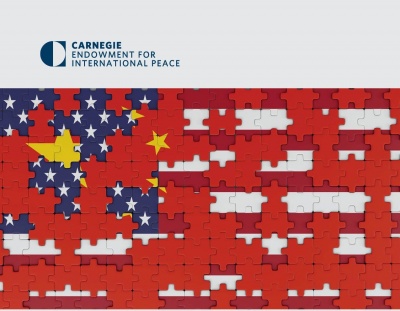Fravel & Heginbotham: "U.S.-China Relations for the 2030s: Toward a Realistic Scenario for Coexistence" | 2024 | News

Taylor Fravel & Eric Heginbotham's latest reasearch essay appears on the Carnegie Endowment for International Peace's "U.S.-China Relations for the 2030s: Toward a Realistic Scenario for Coexistence." Along with several other contributors, Christopher S. Chivvis, Mariano-Florentino (Tino) Cuéllar writes, "It has become difficult to imagine how Washington and Beijing might turn their relationship, which is so crucial to the future of world order, toward calmer waters. If there is to be any hope of doing so, however, policy experts need some realistic vision of what those calmer waters might look like."
"How will the military balance of power in East Asia evolve over the next decade amid growing and intensifying competition between the United States and China? What would a stable balance of power that minimizes crisis and arms race instability look like and how might it emerge? To answer these questions, this chapter proceeds in three steps. First, it reviews the factors that will shape the balance of power in East Asia. These include the distribution of material resources among the main actors, the nature and impact of military technology, and the United States’ relations with its allies in the region as well as with other important partners. Second, it reviews current trends in U.S. military force posture in the region. Third, it describes a denial strategy that would bolster stability. Such a strategy would require forward-deployed U.S. forces that are resilient with capabilities primarily oriented toward defeating attacks rather than launching offensives.
Three assumptions should be noted at the start. First, the United States will remain committed to the defense of its treaty allies in East Asia. Second, the status of Taiwan will remain unresolved, and Washington will retain its “one China” policy, including strategic ambiguity, while Beijing will not renounce the use of force over Taiwan. Taiwan will therefore remain an important consideration for U.S. military planning, as will the defense of allies. Third, given the size and general disposition of U.S. and Chinese military forces, a basic security dilemma will remain in effect, which will make arms control unlikely within the time frame considered. The effects of anarchy will remain powerful as each side takes into account the other’s military power. Hence, the discussion of U.S. force structure and posture examines only those changes that could enhance crisis and arms race stability without requiring parallel moves by China.
Factors Shaping the Military Balance
The military balance of power always depends on the specific objects being contested, the number and identity of the actors involved, the domain of conflict, distance and geography, and other factors.167 Before considering how a stable balance might develop, we review the key factors that will shape the military balance in East Asia over the next decade.
Distribution of Economic Resources
National wealth is a critical factor in the military balance as it generates the resources for states to deploy and upgrade their military forces, including investments in new and emerging technologies with military applications. Over the next decade, the balance of national wealth will likely continue to shift in China’s favor, but it will likely do so at a significantly slower rate than in previous decades. One consequence of China’s slowing growth rate is that increases in China’s spending on defense will also likely slow."
[To Read Full Essay, PDF Version]
From the Carnegie Endowment for International Peace
